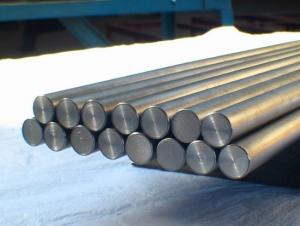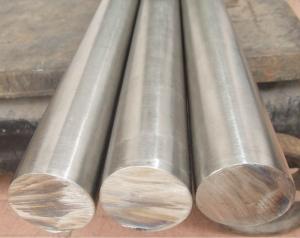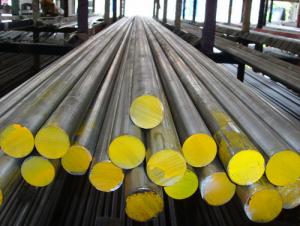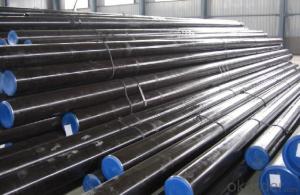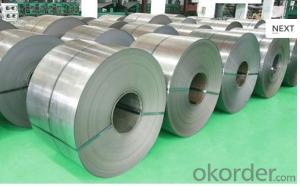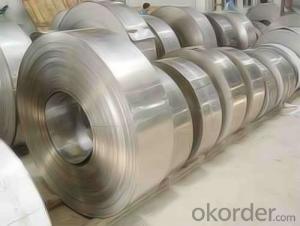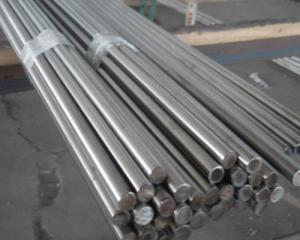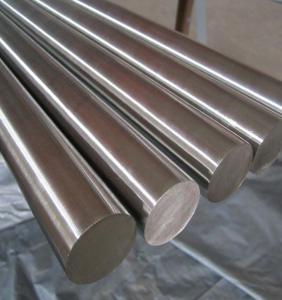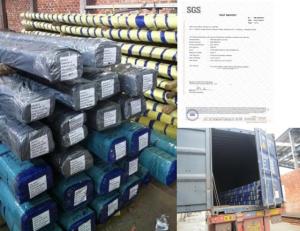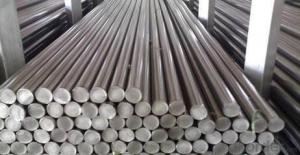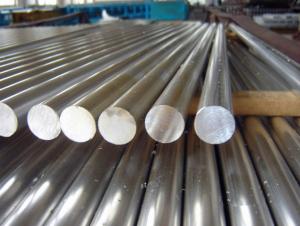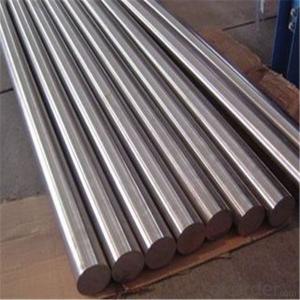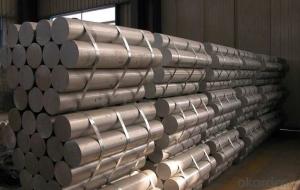316L Stainless Steel Bar
- Loading Port:
- China Main Port
- Payment Terms:
- TT or LC
- Min Order Qty:
- 5 Tons m.t.
- Supply Capability:
- 1000 Tons Per Month m.t./month
OKorder Service Pledge
OKorder Financial Service
You Might Also Like
Stainless Steel Bar
Stainless Steel Round Bright Bar
Hot-rolled Stainless Steel Black Bar
Grades:201、202、301、302、303、304、316、316L、321 etc
|
Diameter (mm) |
weight (kg/m) |
Diameter (mm) |
weight (kg/m) |
Diameter (mm) |
weight (kg/m) |
Diameter (mm) |
weight (kg/m) |
|
2 |
0.025 |
14 |
1.221 |
30 |
5.607 |
50 |
15.575 |
|
3 |
0.056 |
15 |
1.402 |
32 |
6.38 |
55 |
18.846 |
|
4 |
0.1 |
16 |
1.595 |
34 |
7.202 |
60 |
22.428 |
|
5 |
0.156 |
18 |
2.019 |
35 |
7.632 |
65 |
26.322 |
|
6 |
0.224 |
19 |
2.249 |
36 |
8.074 |
70 |
30.527 |
|
7 |
0.305 |
20 |
2.492 |
38 |
8.996 |
75 |
35.044 |
|
8 |
0.399 |
22 |
3.015 |
40 |
9.968 |
80 |
39.872 |
|
9 |
0.505 |
24 |
3.588 |
42 |
10.99 |
85 |
45.012 |
|
10 |
0.623 |
25 |
3.894 |
45 |
12.616 |
90 |
50.463 |
|
11 |
0.754 |
27 |
4.542 |
46 |
13.183 |
95 |
56.226 |
|
12 |
0.897 |
28 |
4.884 |
48 |
14.354 |
100 |
62.3 |
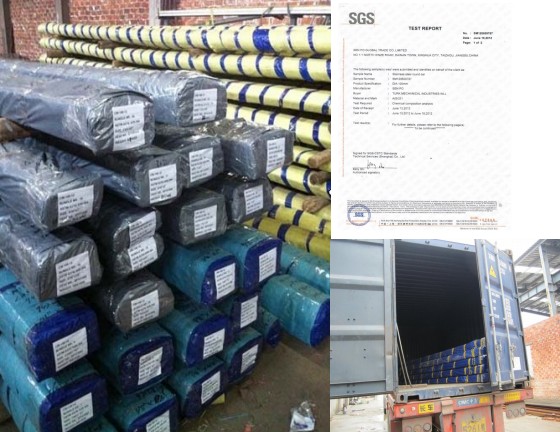
- Q:Can stainless steel bars be coated or painted?
- Stainless steel bars have the capability of being coated or painted. Despite the well-known corrosion resistance of stainless steel, there exist multiple motivations for coating or painting stainless steel bars. By coating or painting them, the bars can achieve an improved aesthetic, obtain extra safeguards against corrosion or deterioration, and enable the option of color customization. Nevertheless, it is crucial to acknowledge that the selected coating or paint must be explicitly formulated for stainless steel and applied accurately in order to guarantee longevity and preserve the innate properties of stainless steel.
- Q:How are stainless steel bars manufactured?
- The production of stainless steel bars involves a process known as stainless steel bar manufacturing. This process encompasses various stages that guarantee the production of bars with exceptional quality and precision. To begin the manufacturing of stainless steel bars, raw materials are melted. Iron ore, chromium, nickel, and other elements are melted in an electric furnace to create stainless steel. This melting process yields a molten metal, which is then refined and controlled to achieve the desired composition and quality. Once the molten metal is refined, it is poured into molds to form long metal bars called billets. These billets are subsequently heated and subjected to hot rolling to reduce their thickness and shape them according to specific dimensions. During hot rolling, the billets are passed through a series of rollers that apply pressure to shape the metal bars and enhance their mechanical properties. After the hot rolling process, the stainless steel bars undergo heat treatment, which involves heating them to a specific temperature and then rapidly or slowly cooling them. This heat treatment process enhances the bars' hardness, strength, and other properties, ultimately ensuring the desired mechanical and metallurgical characteristics of the stainless steel bars. Following heat treatment, the bars undergo cold drawing or cold finishing. This process entails pulling the bars through a series of dies at room temperature to reduce their size, enhance their surface finish, and improve their dimensional accuracy. Cold drawing also increases the bars' strength and enhances their surface properties. Finally, the stainless steel bars are cut into the desired lengths and subjected to quality inspection. Additional processes such as straightening, polishing, or coating may be applied before the bars are deemed suitable for use in various industries and applications. In summary, the manufacturing of stainless steel bars involves a combination of melting, casting, hot rolling, heat treatment, cold drawing, and finishing processes. These meticulous steps ensure that the bars meet specific standards and requirements, resulting in the production of durable, corrosion-resistant, and high-quality stainless steel bars suitable for a wide range of applications.
- Q:Are stainless steel bars suitable for the production of wire ropes?
- Yes, stainless steel bars are suitable for the production of wire ropes. Stainless steel is highly durable and corrosion-resistant, making it ideal for applications where wire ropes are exposed to harsh environments or require high tensile strength. Additionally, stainless steel bars provide excellent resistance to heat, chemicals, and abrasion, ensuring the longevity and reliability of wire ropes in various industries such as construction, maritime, and mining.
- Q:Are stainless steel bars resistant to abrasion and wear?
- Stainless steel bars are renowned for their remarkable ability to withstand abrasion and wear. This outstanding feature is primarily attributed to their composition, which includes a substantial proportion of chromium. Chromium, in turn, creates a protective layer called the passive film on the surface of the stainless steel, thereby effectively preventing corrosion and wear. Moreover, heat treatment is frequently applied to stainless steel bars to amplify their resistance to wear and abrasion. Consequently, stainless steel bars emerge as a fitting option for numerous applications demanding exceptional durability and resistance to wear, including construction, manufacturing, and automotive industries.
- Q:Can stainless steel bars be used in wastewater treatment applications?
- Yes, stainless steel bars can be used in wastewater treatment applications. Stainless steel offers excellent corrosion resistance, durability, and cleanliness, making it suitable for use in harsh and corrosive environments like wastewater treatment plants. Additionally, stainless steel bars can withstand high temperatures, pressure, and exposure to various chemicals, making them an ideal choice for wastewater treatment applications.
- Q:Are stainless steel bars suitable for the construction industry?
- Yes, stainless steel bars are highly suitable for the construction industry. Stainless steel has several properties that make it an excellent choice for construction applications. Firstly, stainless steel is known for its exceptional corrosion resistance. This property ensures that stainless steel bars can withstand exposure to moisture, chemicals, and other harsh environmental conditions commonly encountered in construction projects. This resistance to corrosion significantly extends the lifespan of stainless steel bars, making them a cost-effective and durable option for construction applications. Secondly, stainless steel bars offer excellent strength and structural integrity. They have a high tensile strength, which means they can withstand heavy loads and stresses without deformation or failure. This makes stainless steel bars ideal for supporting structures and reinforcing concrete in construction projects, providing stability and safety. Additionally, stainless steel bars have a high degree of versatility. They can be easily fabricated, cut, and welded to suit specific project requirements. This flexibility allows for the creation of complex and intricate designs, making stainless steel bars suitable for a wide range of construction applications. Furthermore, stainless steel bars have aesthetic appeal. Their sleek and modern appearance adds a touch of sophistication to architectural designs. This makes stainless steel bars a popular choice for both functional and decorative purposes in the construction industry. In conclusion, stainless steel bars are highly suitable for the construction industry due to their corrosion resistance, strength, versatility, and aesthetic appeal. They offer durability, structural integrity, and design flexibility, making them a reliable and cost-effective option for various construction applications.
- Q:What are the applications of stainless steel bars in the pulp and paper industry?
- The pulp and paper industry relies on stainless steel bars for various important purposes. Firstly, they are commonly used in the construction of machinery and equipment in pulp and paper mills. These bars offer structural support, durability, and corrosion resistance, which are crucial in an environment that involves exposure to chemicals, moisture, and high temperatures. Stainless steel bars are employed in the production of components like pulpers, digesters, screens, and refiners, ensuring the longevity and performance of these machines. Secondly, they are utilized in the production of papermaking screens and drainage elements. These screens play a vital role in removing impurities and controlling the flow of water and fiber during the papermaking process. Stainless steel bars, due to their resistance to corrosion and wear, are an ideal choice for constructing screens that can withstand the harsh conditions of papermaking. Additionally, the smooth surface of these bars allows for efficient drainage, contributing to improved paper quality and productivity. Furthermore, stainless steel bars find application in the drying section of paper machines. This stage involves using large rolls or cylinders to dry the paper by applying heat. Stainless steel bars are used in the construction of these drying cylinders because of their high heat resistance and excellent mechanical properties. They ensure the stability and strength of the drying cylinders and enable efficient heat transfer, resulting in faster and more efficient paper drying. Moreover, stainless steel bars are employed in the construction of tanks and storage vessels in the pulp and paper industry. These tanks are responsible for storing chemicals, additives, and pulp fibers, and they are exposed to aggressive environments. Stainless steel bars with corrosion-resistant properties are necessary to prevent contamination and maintain the integrity of the stored materials. In conclusion, stainless steel bars are essential in the pulp and paper industry. They are used in the construction of machinery and equipment, the fabrication of screens, drying cylinders, and storage tanks. Due to their corrosion resistance, durability, and mechanical properties, stainless steel bars are the ideal choice for withstanding the challenging conditions of pulp and paper manufacturing.
- Q:Are stainless steel bars available in different lengths?
- Yes, stainless steel bars are available in different lengths.
- Q:Are stainless steel bars heat resistant?
- Yes, stainless steel bars are heat resistant. Stainless steel is known for its excellent heat resistance properties, making it suitable for various applications where high temperatures are involved. This material can withstand extreme heat without losing its structural integrity or experiencing significant changes in its physical properties. Stainless steel bars are commonly used in industries such as construction, food processing, automotive, and aerospace, where they are exposed to high temperatures during fabrication, cooking, processing, or engine operation. Whether it is for heat exchangers, furnace parts, or cookware, stainless steel bars offer reliable heat resistance, making them a popular choice in many industries.
- Q:How do stainless steel bars perform in cryogenic environments?
- Stainless steel bars exhibit excellent performance in cryogenic environments. Due to their inherent properties, stainless steel bars can withstand extremely low temperatures without losing their structural integrity or mechanical properties. One of the key factors contributing to their success in cryogenic environments is their low thermal conductivity, which helps in minimizing heat transfer and maintaining the desired temperature. Additionally, stainless steel bars possess high corrosion resistance, even in the presence of cryogenic fluids such as liquid nitrogen or helium, which are commonly used in cryogenic applications. This corrosion resistance ensures the longevity and reliability of stainless steel bars in such environments. Furthermore, stainless steel bars offer good strength and toughness, which makes them suitable for use in cryogenic equipment and components that are subjected to high mechanical stresses. Overall, stainless steel bars are highly preferred in cryogenic applications due to their exceptional performance, durability, and resistance to low temperatures and corrosive conditions.
1. Manufacturer Overview |
|
|---|---|
| Location | Jiangsu, China |
| Year Established | 2010 |
| Annual Output Value | above US$8 million |
| Main Markets | East Asia, Middle East, West Europe |
| Company Certifications | |
2. Manufacturer Certificates |
|
|---|---|
| a) Certification Name | |
| Range | |
| Reference | |
| Validity Period | |
3. Manufacturer Capability |
|
|---|---|
| a)Trade Capacity | |
| Nearest Port | Shanghai |
| Export Percentage | |
| No.of Employees in Trade Department | above 50 people |
| Language Spoken: | English, Chinese, Arabic |
| b)Factory Information | |
| Factory Size: | about 15000 square meter |
| No. of Production Lines | above 4 |
| Contract Manufacturing | OEM Service Offered,Design Service Offered |
| Product Price Range | Average |
Send your message to us
316L Stainless Steel Bar
- Loading Port:
- China Main Port
- Payment Terms:
- TT or LC
- Min Order Qty:
- 5 Tons m.t.
- Supply Capability:
- 1000 Tons Per Month m.t./month
OKorder Service Pledge
OKorder Financial Service
Similar products
New products
Hot products
Related keywords
